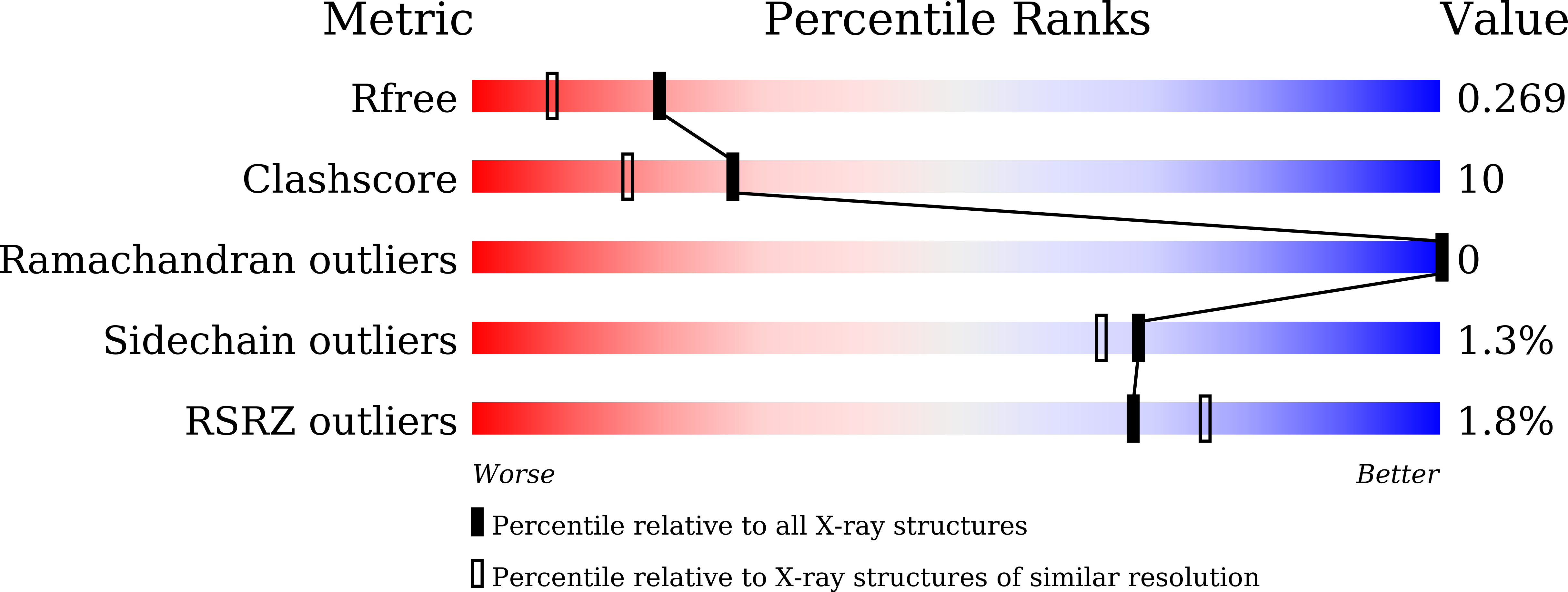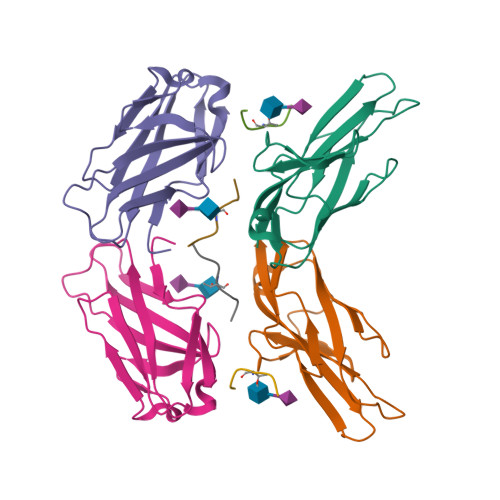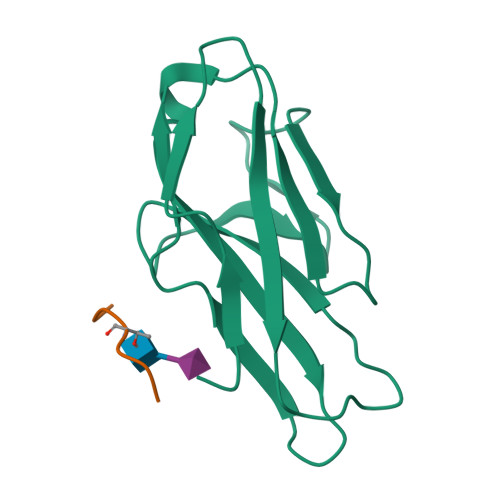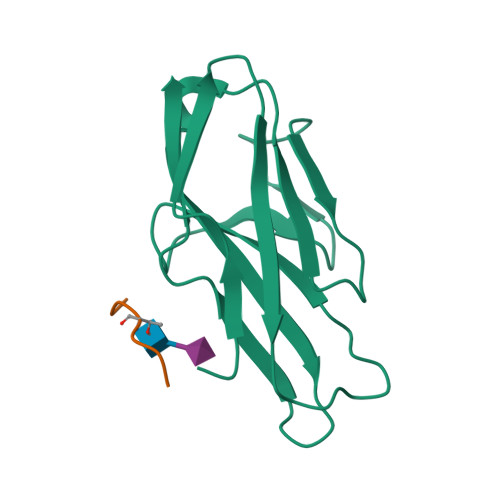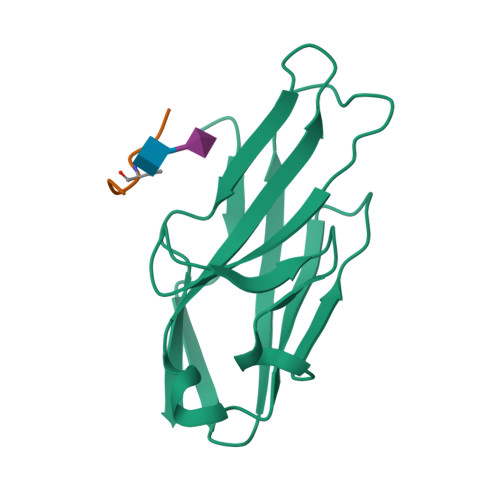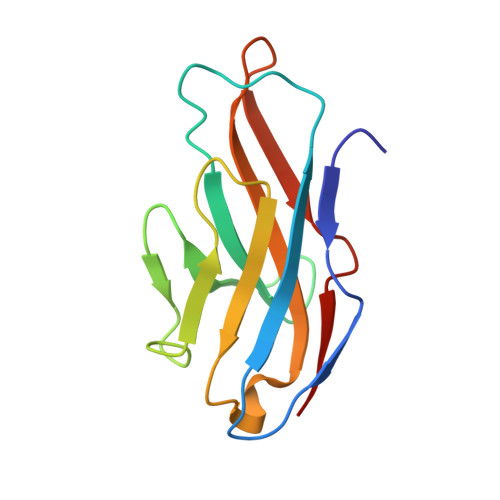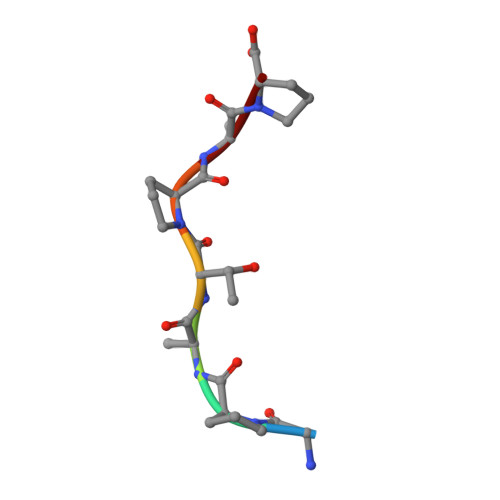Structural and thermodynamic analyses reveal critical features of glycopeptide recognition by the human PILR alpha immune cell receptor.
Furukawa, A., Kakita, K., Yamada, T., Ishizuka, M., Sakamoto, J., Hatori, N., Maeda, N., Ohsaka, F., Saitoh, T., Nomura, T., Kuroki, K., Nambu, H., Arase, H., Matsunaga, S., Anada, M., Ose, T., Hashimoto, S., Maenaka, K.(2017) J Biological Chem 292: 21128-21136
- PubMed: 29046357
- DOI: https://doi.org/10.1074/jbc.M117.799239
- Primary Citation of Related Structures:
5XO2, 5XOF - PubMed Abstract:
Before entering host cells, herpes simplex virus-1 uses its envelope glycoprotein B to bind paired immunoglobulin-like type 2 receptor α (PILRα) on immune cells. PILRα belongs to the Siglec (sialic acid (SA)-binding immunoglobulin-like lectin)-like family, members of which bind SA. PILRα is the only Siglec member to recognize not only the sialylated O -linked sugar T antigen (sTn) but also its attached peptide region. We previously determined the crystal structure of PILRα complexed with the sTn-linked glycopeptide of glycoprotein B, revealing the simultaneous recognition of sTn and peptide by the receptor. However, the contribution of each glycopeptide component to PILRα binding was largely unclear. Here, we chemically synthesized glycopeptide derivatives and determined the thermodynamic parameters of their interaction with PILRα. We show that glycopeptides with different sugar units linking SA and peptides ( i.e. "GlcNAc-type" and "deoxy-GlcNAc-type" glycopeptides) have lower affinity and more enthalpy-driven binding than the wild type ( i.e. GalNAc-type glycopeptide). The crystal structures of PILRα complexed with these glycopeptides highlighted the importance of stereochemical positioning of the O4 atom of the sugar moiety. These results provide insights both for understanding the unique O -glycosylated peptide recognition by the PILRα and for the rational design of herpes simplex virus-1 entry inhibitors.
Organizational Affiliation:
From the Laboratories of Biomolecular Science and.







